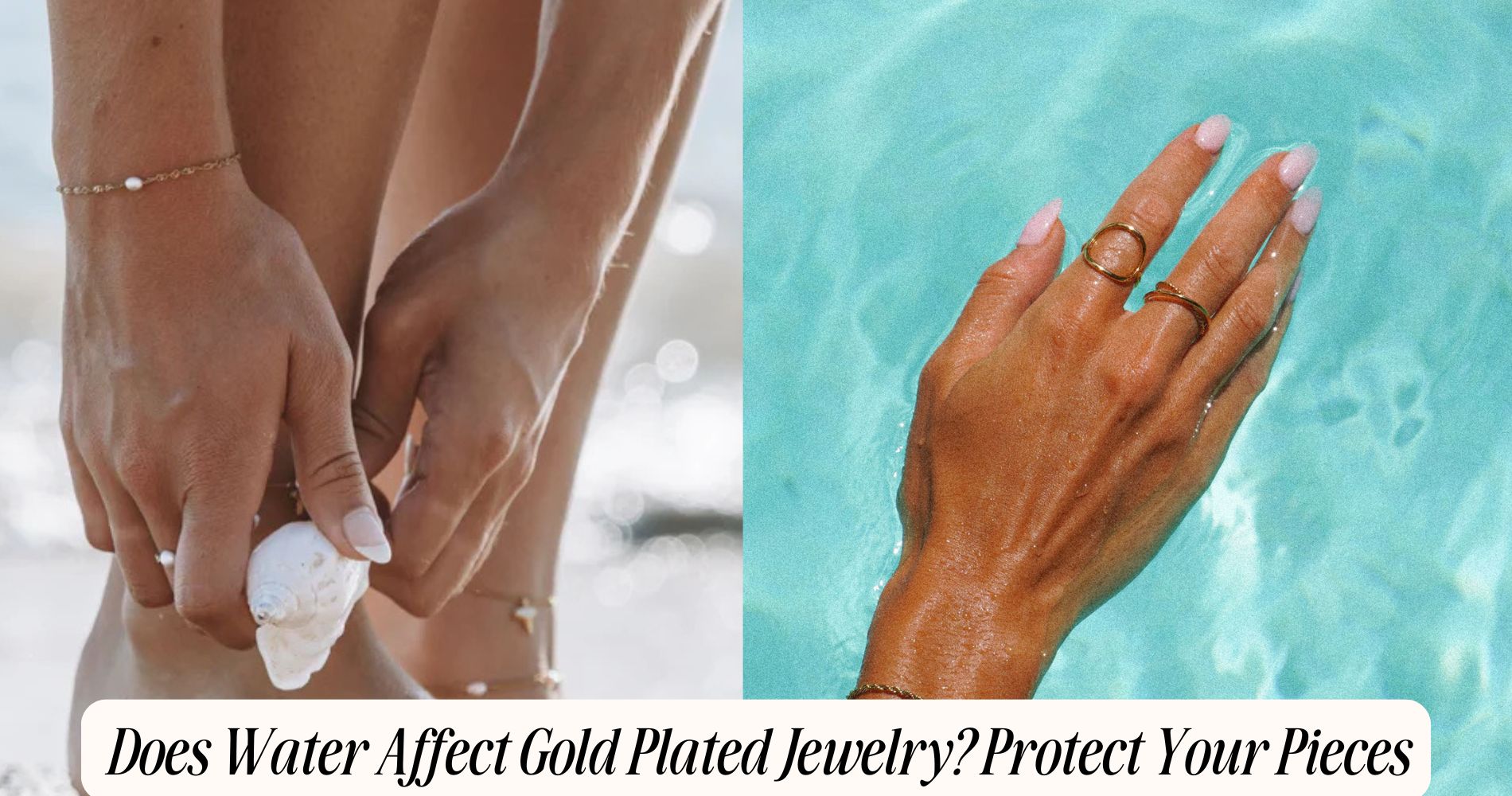
Does Water Affect Gold Plated Jewelry? Protect Your Pieces
Does water affect gold-plated jewelry? Yes, it does. When exposed to moisture, gold-plated jewelry can tarnish and lose its shine over time. Water can weaken the adhesive that bonds the gold layer to the base metal, causing peeling and discoloration. To protect your pieces, it's crucial to keep them dry by removing them before swimming, showering, or engaging in activities like washing your hands. By taking a few protective steps, you can preserve the beauty of your gold-plated jewelry for longer. Explore additional care tips and browse our stunning inexpensive gold jewelry collection to maintain your favorite pieces effortlessly.
Understanding Gold Plating
When you consider gold plating, you're fundamentally looking at a process that involves applying a thin layer of gold over a base metal.
This technique not only enhances the visual appeal of the jewelry but also contributes to its overall durability. Gold plating can make pieces more resistant to tarnishing and wear, especially when compared to uncoated base metals.
However, it's crucial to recognize that the thickness of the gold layer considerably affects jewelry durability. Thicker plating often results in a longer-lasting finish, while thinner layers may wear off more quickly.
Understanding these aspects can help you choose pieces that maintain their beauty over time, ensuring that your gold-plated jewelry remains a cherished part of your collection.
How Water Affects Gold Plated Jewelry
Gold-plated jewelry, while visually stunning, requires careful handling, especially when it comes to exposure to water.
Water can cause significant water damage to your pieces, leading to a breakdown of the gold layer over time. When moisture seeps into the metal beneath, it can hasten tarnishing and compromise the jewelry's integrity. This not only affects the appearance but also shortens the jewelry's longevity.
Additionally, water can cause the adhesive used in the plating process to weaken, further exposing the base metal underneath.
To maintain your gold-plated jewelry's beauty and durability, it's essential to keep it dry and remove it before swimming, showering, or washing your hands.
Taking these precautions will help preserve your treasured pieces for years to come.
Common Scenarios of Water Exposure
Although you mightn't think twice about wearing your gold-plated jewelry during everyday activities, several common scenarios can lead to unintended water exposure.
For instance, during pool parties, splashes from the water can compromise your jewelry's finish, especially if you're diving in and out of the pool. Similarly, if you're caught in rainy weather, even a light drizzle can create moisture that may dull your jewelry's shine over time.
Other scenarios include washing your hands or dishes without removing your rings or bracelets. It's easy to forget, but consistent exposure to water can weaken the gold plating.
Being mindful of these situations can help you protect your gold-plated pieces and maintain their beauty for longer.
Signs of Damage From Water
When your gold plated jewelry is exposed to water, you might notice signs of damage like discoloration and a loss of shine.
These changes often indicate that the protective layer is compromised.
It's important to recognize these signs early to maintain the beauty and longevity of your pieces.
Discoloration of Gold Plating
Have you ever noticed your gold-plated jewelry losing its luster? Discoloration can be a common issue, often caused by exposure to water and chemicals.
When your jewelry comes into contact with moisture, it can lead to a breakdown of the thin layer of gold, exposing the base metal underneath. This results in unsightly tarnishing and dullness.
To prevent these discoloration causes, it's essential to keep your pieces dry and store them in a cool, dry place. Avoid wearing your jewelry while swimming or showering, and consider applying a protective coating to enhance durability.
Loss of Shine
Even a small amount of water can lead to noticeable loss of shine in your gold-plated jewelry.
This dullness often occurs when moisture seeps into the layers of plating, causing the underlying metal to affect the surface finish. You might notice that your favorite pieces no longer sparkle as they used to, which is a clear sign of damage.
To maintain that luster, consider shine restoration methods, such as gentle cleaning with a soft cloth or a specialized jewelry cleaner.
For long term care, always remove your jewelry before activities involving water, such as swimming or showering.
This proactive approach not only preserves the shine but also extends the life of your treasured items.
Tips for Protecting Your Jewelry
To keep your gold plated jewelry in top condition, it's crucial to avoid water exposure whenever possible.
Establishing a regular cleaning routine will help maintain its shine and integrity.
Additionally, investing in proper storage solutions can prevent scratches and tarnishing when your pieces aren't in use.
Avoid Water Exposure
Although water may seem harmless, it can greatly damage gold plated jewelry if proper precautions aren't taken.
To guarantee your pieces remain in pristine condition, it's crucial to avoid exposing them to water. This means removing your jewelry before swimming, showering, or engaging in activities that might cause you to sweat.
Even a small amount of moisture can lead to tarnishing and wear, compromising the gold layer. For effective jewelry care, store your items in a dry place and consider using anti-tarnish pouches.
If your jewelry does come into contact with water, dry it immediately with a soft cloth.
Regular Cleaning Routine
When you establish a regular cleaning routine for your gold plated jewelry, you greatly enhance its longevity and appearance.
Implement effective cleaning techniques, such as gently wiping your pieces with a soft, lint-free cloth after each wear. This helps remove body oils and dirt that can tarnish the finish.
Aim to clean your jewelry thoroughly every few weeks, incorporating mild soap and water for deeper cleans, but be careful to avoid harsh chemicals.
Create a maintenance schedule that suits your lifestyle, whether it's monthly or bi-monthly. Consistent care not only maintains the shine but also prevents buildup that can damage the gold plating.
Proper Storage Solutions
Storing your gold plated jewelry properly is essential for maintaining its beauty and preventing damage.
Use jewelry boxes lined with soft fabric to protect your pieces from scratches and tarnishing. Avoid overcrowding the box; give each item enough space to prevent tangling.
For ideal preservation, consider a storage solution with climate control to maintain a stable environment. High humidity can cause tarnishing, while extreme dryness may lead to cracking.
Keep your jewelry boxes in a cool, dry place, away from direct sunlight and heat sources. If possible, store individual pieces in anti-tarnish pouches.
Best Practices for Care and Maintenance
To guarantee your gold plated jewelry remains in excellent condition, regular care and maintenance are essential.
Start by cleaning your pieces with a soft cloth after each wear to remove oils and dirt. Avoid exposure to chemicals such as perfumes and lotions, as these can damage the plating.
When not in use, store your jewelry in a cool, dry place, ideally in a fabric-lined box. If you notice any scratches or discoloration, consider seeking professional jewelry repair services.
Additional maintenance tips include limiting direct water contact and removing your jewelry before activities like swimming or exercising.
Following these practices will help preserve the beauty of your gold plated jewelry for years to come.
Frequently Asked Questions
Can Gold Plated Jewelry Be Repaired if Damaged by Water?
Yes, gold plated jewelry can often be repaired using various repair techniques. However, if water damage has occurred, the effectiveness of these methods may depend on the extent of the damage and the plating quality.
How Long Does Gold Plating Typically Last?
Gold plating typically lasts between two to five years, depending on factors like wear and care. To guarantee gold longevity, prioritize proper maintenance, as plating durability can diminish with exposure to harsh conditions or chemicals.
Can I Wear Gold Plated Jewelry in the Shower?
You shouldn't wear gold plated jewelry in the shower. Water can damage the plating, leading to tarnishing. For ideal jewelry maintenance, prioritize proper shower care by removing your pieces before bathing to preserve their appearance.
What Is the Difference Between Gold Plating and Gold Vermeil?
Gold plating involves a thin layer of gold over a base metal, while gold vermeil uses sterling silver as the base and requires a thicker gold layer. This difference affects durability and overall appearance in your jewelry.
Conclusion
To sum up, while gold plated jewelry can withstand occasional exposure to water, prolonged contact can lead to damage and tarnishing. To keep your pieces looking their best, it's crucial to minimize water exposure and follow proper care practices. Regular maintenance and mindful habits will help preserve the gold finish and extend the life of your jewelry. By taking these simple precautions, you can enjoy your beautiful pieces without worrying about potential harm from water.








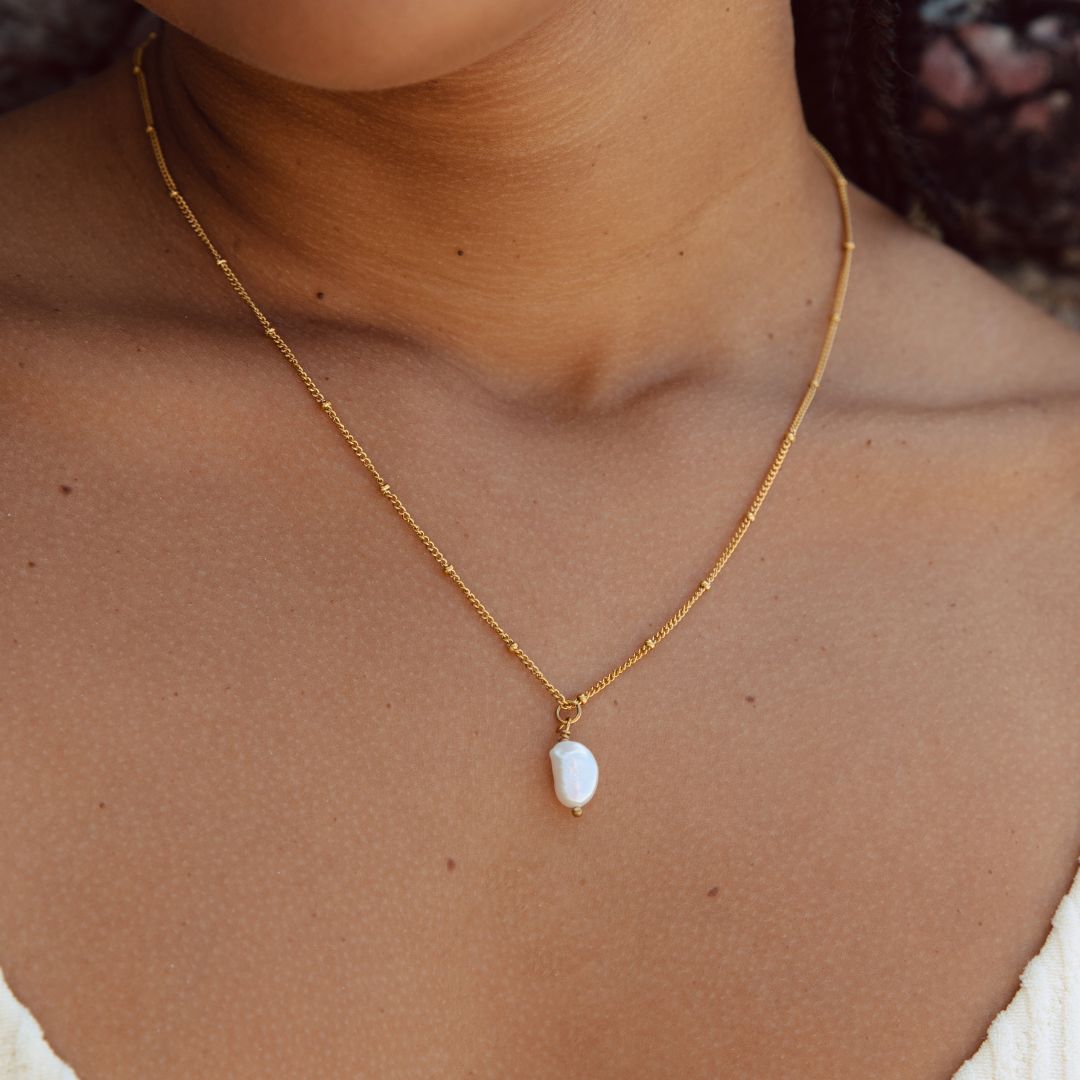

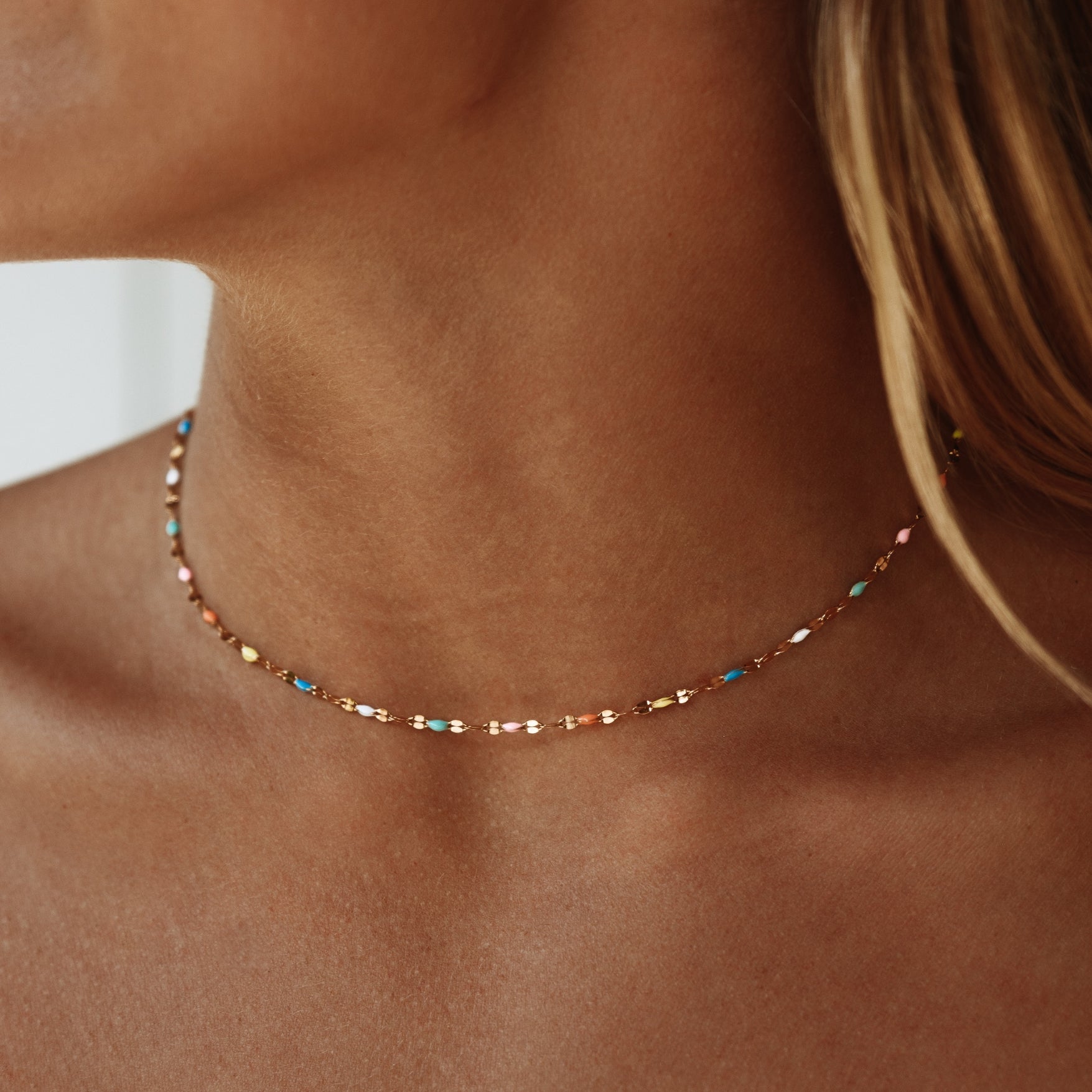


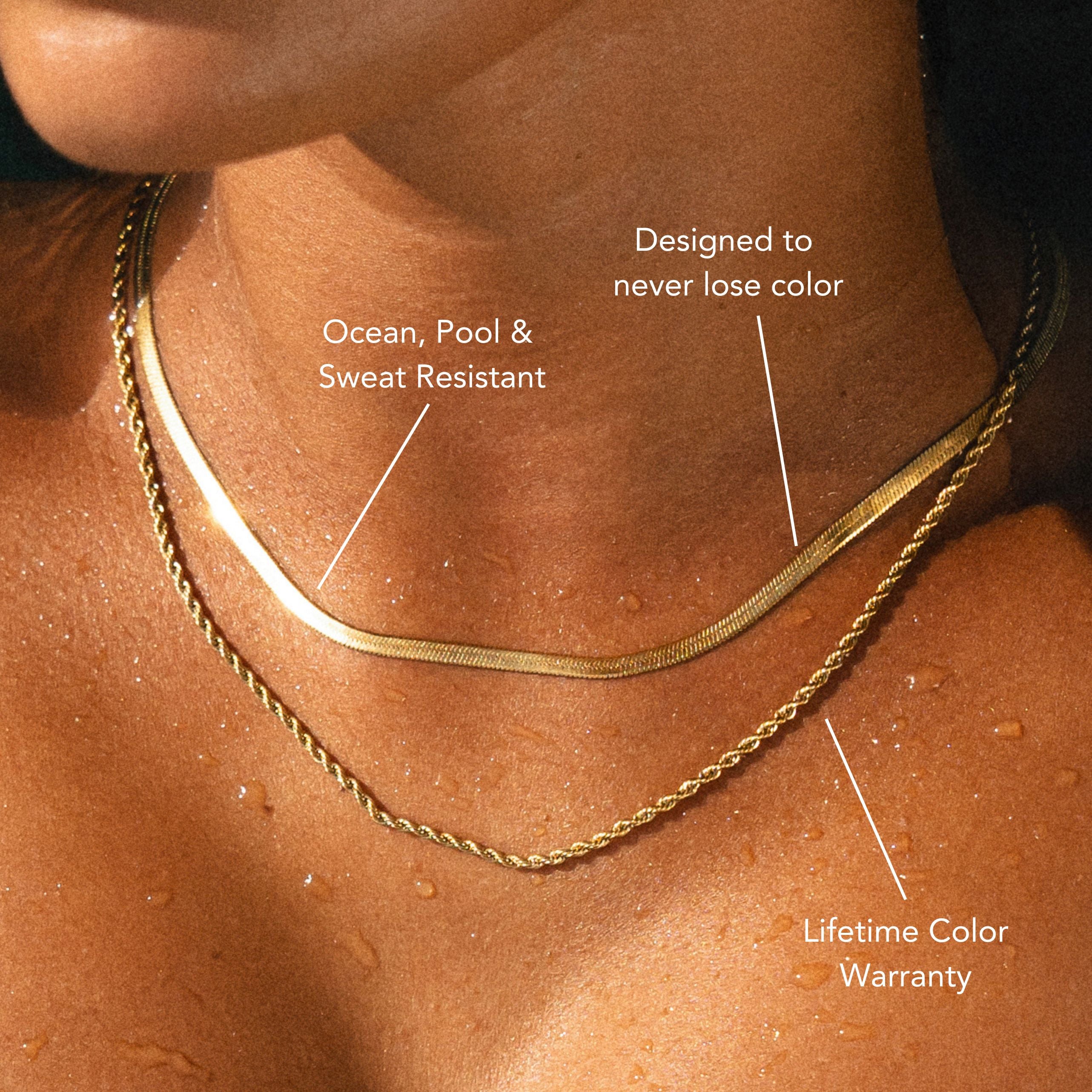
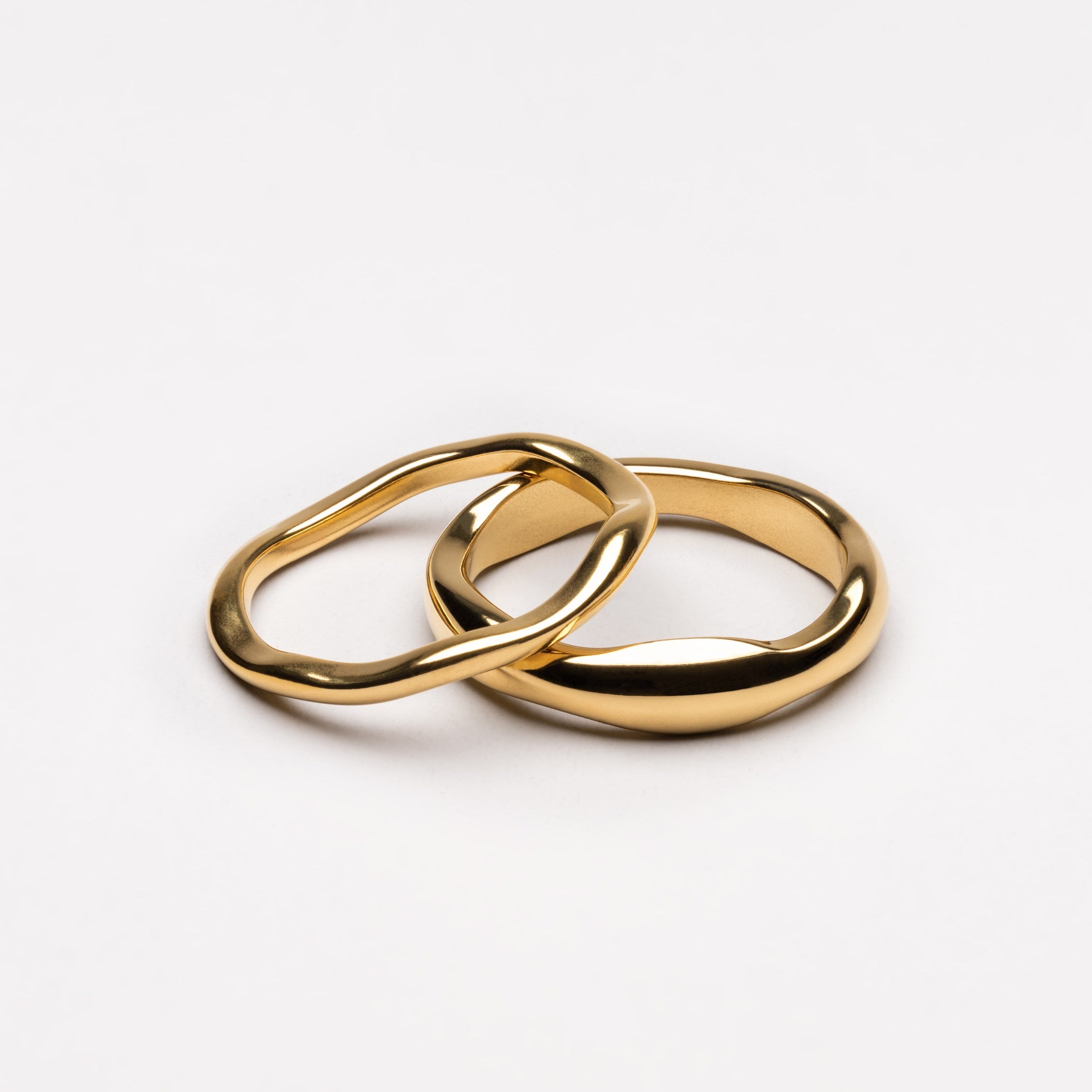
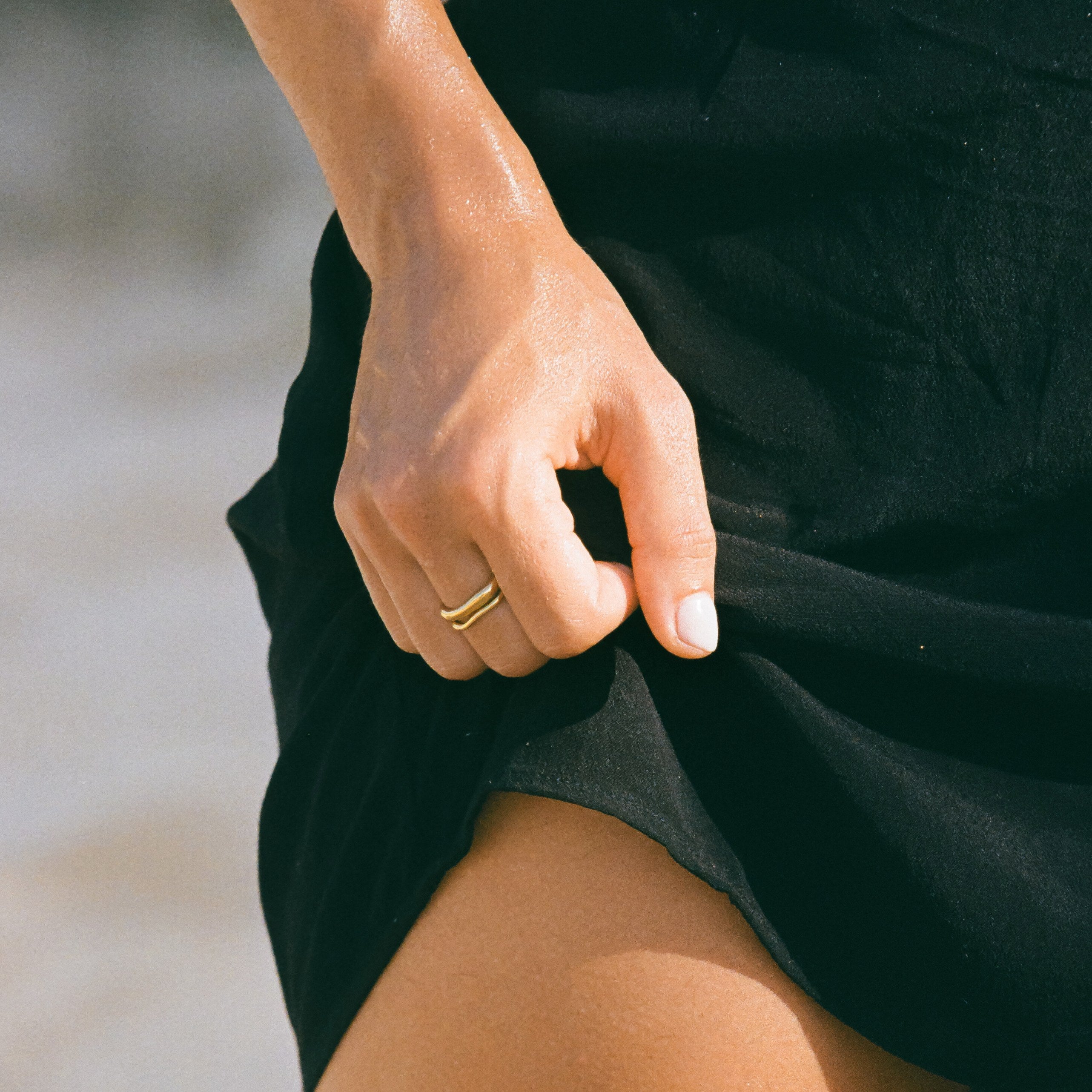

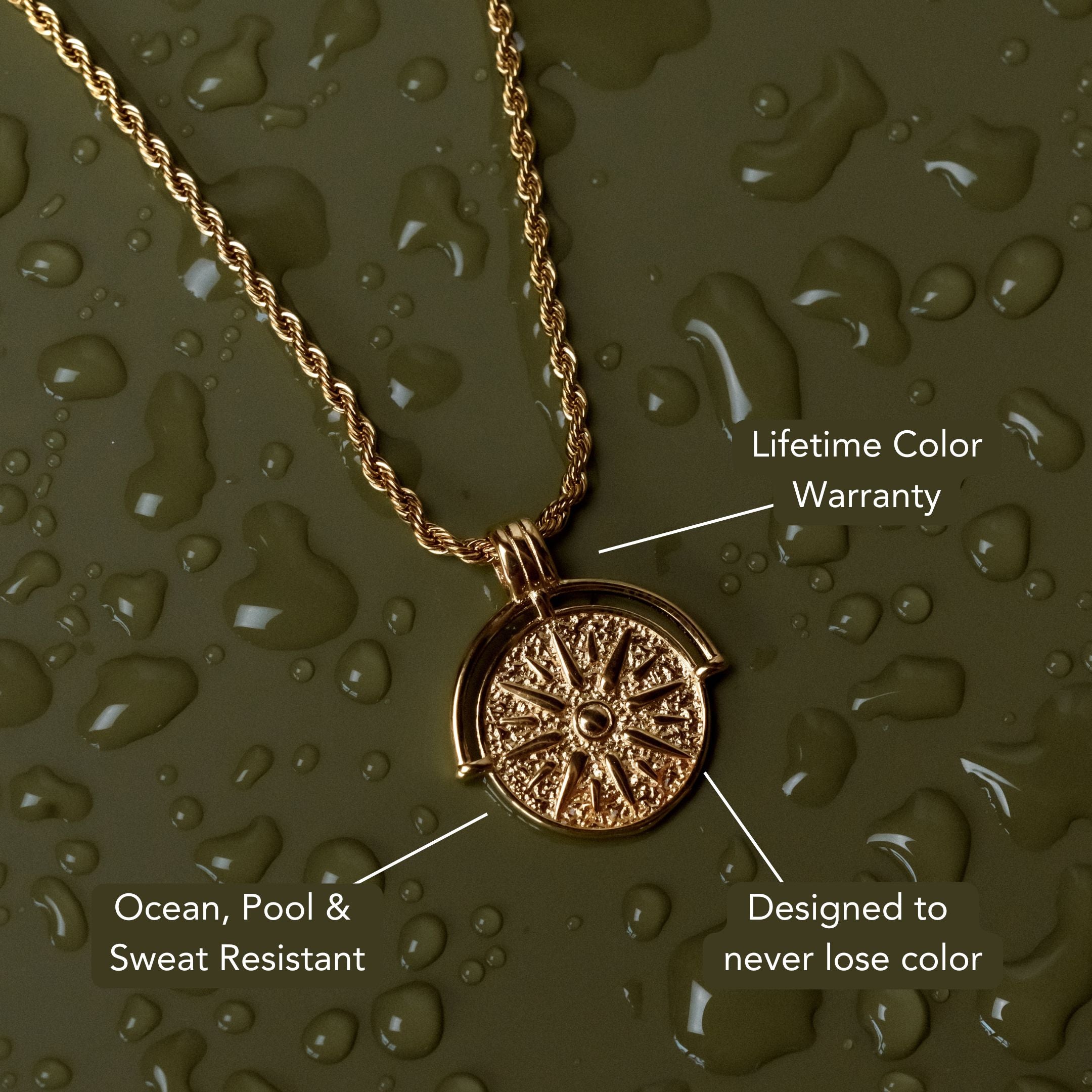
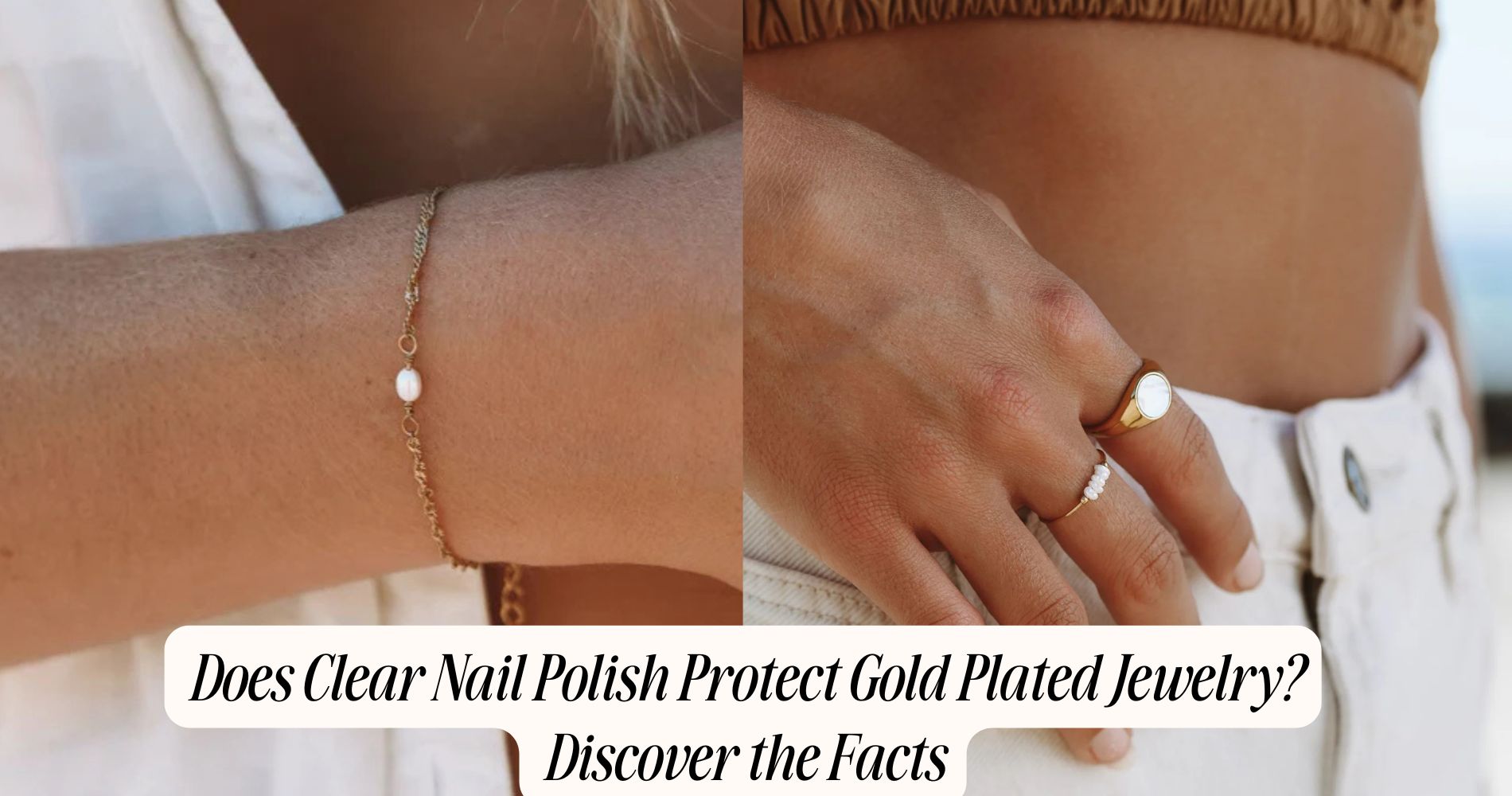





Leave a comment
This site is protected by hCaptcha and the hCaptcha Privacy Policy and Terms of Service apply.